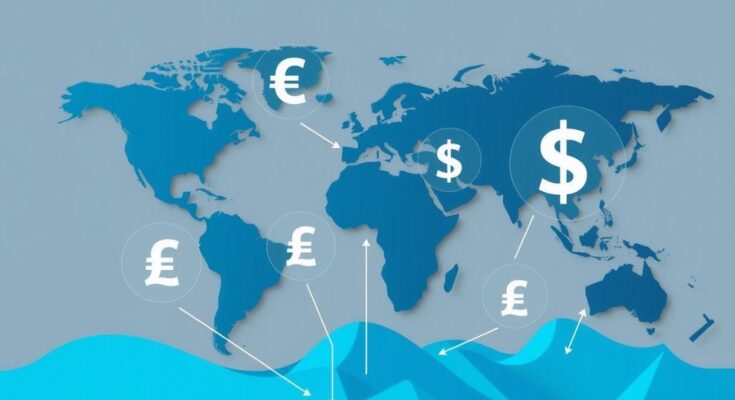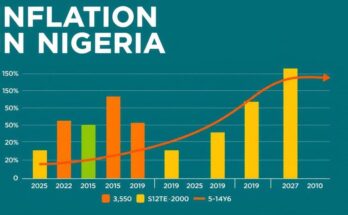President Trump has announced new tariffs starting April 5, introducing a 10 percent baseline tariff globally while imposing additional steeper tariffs on nations deemed as offenders. Key trading partners face significantly higher rates, and notable exemptions are made for Canada and Mexico. New tariffs on automobiles and the end of a duty-free exemption for small parcels from China are also included.
On Wednesday, United States President Donald Trump announced significant new tariffs targeting a range of international trading partners. This move, described as a “declaration of economic independence,” introduces a baseline tariff of 10 percent effective April 5, with additional rates for countries classified as serious offenders taking effect on April 9.
The additional tariffs impose steeper rates on key trading partners; the European Union faces a 20 percent tariff, while China is subjected to a 34 percent levy. This figure combines with a previous 20 percent tariff related to the fentanyl supply chain, totaling a staggering 54 percent. Other affected countries include India with a 26 percent rate, South Korea at 25 percent, and Japan at 24 percent. Trump noted, “For nations that treat us badly, we will calculate the combined rate of all their tariffs, non-monetary barriers, and other forms of cheating.”
However, major allies Canada and Mexico are exempt from these new tariffs, continuing to face existing 25 percent duties on imports. Additionally, products flowing under the US-Mexico-Canada Agreement will remain unaffected by the new baseline rate unless new agreements alter the terms. The tariffs do not stack on top of current sector-specific duties, such as those on steel and aluminum, which are already in effect.
The announcement also includes a new 25 percent tariff on imported automobiles and specific parts, further complicating conditions for the automotive sector. Earlier, tariffs on steel and aluminum were expanded to include products like canned beer and aluminum cans. Investigations into imports of copper and lumber could potentially lead to future tariffs. The administration is also considering similar tariffs on semiconductors and pharmaceuticals.
Additionally, President Trump ordered an end to the duty-free exemption for small parcels from China, significantly affecting the importation of low-cost goods. This rule, commencing on May 2, will impose a 30 percent duty on packages or a flat fee of $25 per item, escalating to $50 after June 1. This change aims to address concerns related to the surge in low-priced goods facilitated through platforms such as Shein and Temu.
In summary, President Trump’s latest tariffs mark a significant shift in U.S. trade policy, with a baseline tariff affecting numerous nations and steeper penalties for those considered trade offenders. Exemptions are granted to key allies, while new tariffs are introduced to impact the automotive and low-cost goods sectors. These measures aim to reshape U.S. trade dynamics and respond to longstanding grievances with international trading practices.
Original Source: vietnamnews.vn




